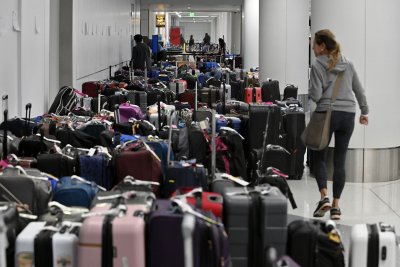Southwest Airlines gets $11M break after fines for 2022 meltdown

Dec. 7 (UPI) — Southwest Airlines will not have to pay the final $11 million portion of a record civil penalty tied to its 2022 holiday meltdown, the U.S. Department of Transportation announced Friday.
Transportation officials in 2023 had fined Southwest some $140 million for “numerous violations of consumer protection laws” when operations failures led to 16,900 cancelled flights during the 2022 Christmas holiday season.
Included in that penalty was $35 million that the airline was ordered to pay in three installments to the U.S. Treasury Department. Southwest previously made two $12 million payments.
The Trump administration credited Southwest for $112 million in operational upgrades that significantly improved its on-time performance and reliability and waived the final $11 million payment to the Treasury Department.
“DOT believes that this approach is in the public interest as it incentivizes airlines to invest in improving their operations and resiliency, which benefits consumers directly,” officials said in a statement.
“This credit structure allows for the benefits of the airline’s investment to be realized by the public, rather than resulting in a government monetary penalty.”
Those penalties had come on top of the $600 million Southwest was ordered to reimburse passengers who faced travel disruptions.
“Southwest Airlines is grateful to Secretary Duffy and the DOT Team for recognizing Southwest’s significant investments in modernizing our operations,” the airline said in a statement to ABC News.
“During the last two years, Southwest successfully completed an operational turnaround that directly benefits our Customers with industry-leading on-time performance and percentage of completed flights without cancellations.”
